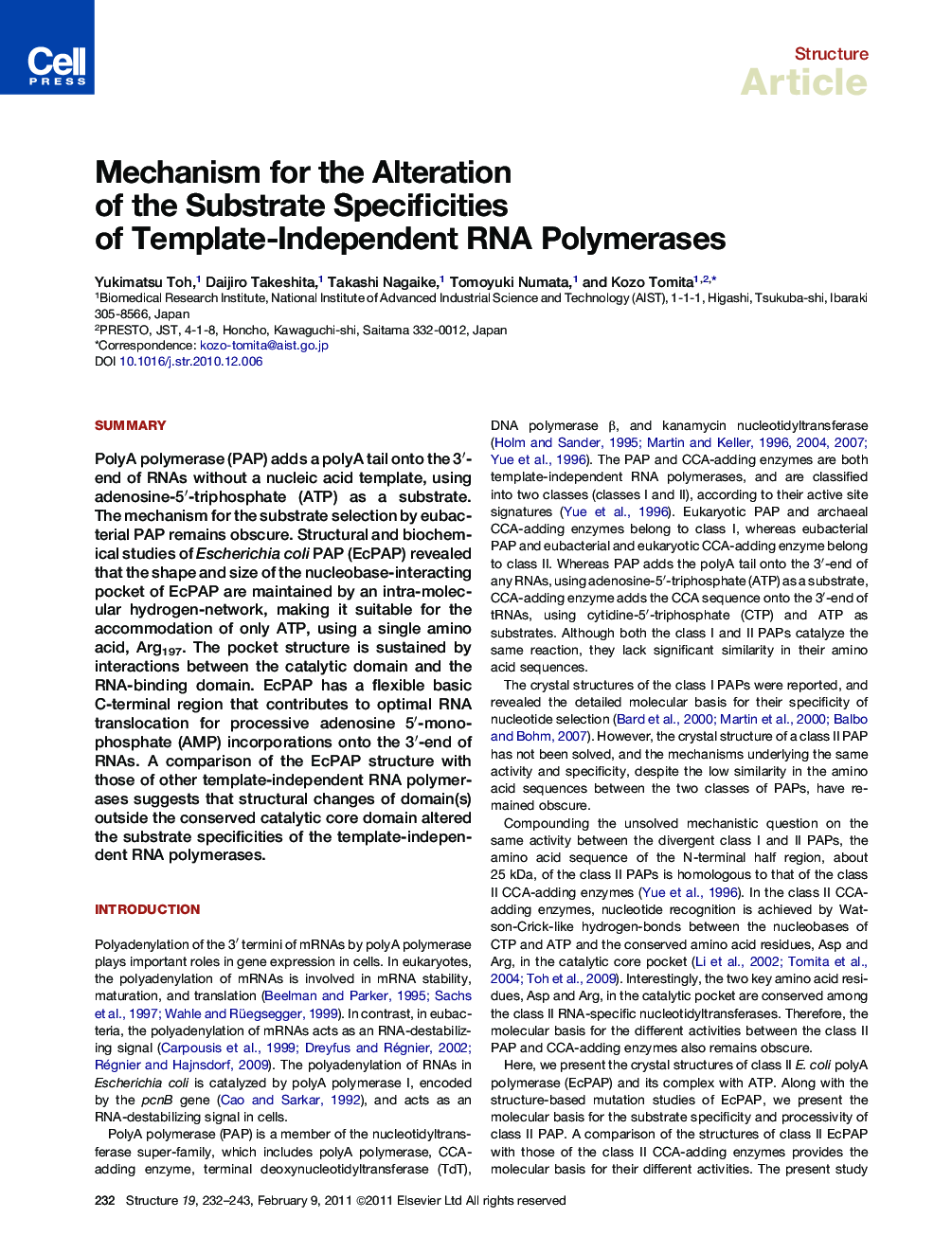| کد مقاله | کد نشریه | سال انتشار | مقاله انگلیسی | نسخه تمام متن |
|---|---|---|---|---|
| 2030517 | 1071212 | 2011 | 12 صفحه PDF | دانلود رایگان |

SummaryPolyA polymerase (PAP) adds a polyA tail onto the 3′-end of RNAs without a nucleic acid template, using adenosine-5′-triphosphate (ATP) as a substrate. The mechanism for the substrate selection by eubacterial PAP remains obscure. Structural and biochemical studies of Escherichia coli PAP (EcPAP) revealed that the shape and size of the nucleobase-interacting pocket of EcPAP are maintained by an intra-molecular hydrogen-network, making it suitable for the accommodation of only ATP, using a single amino acid, Arg197. The pocket structure is sustained by interactions between the catalytic domain and the RNA-binding domain. EcPAP has a flexible basic C-terminal region that contributes to optimal RNA translocation for processive adenosine 5′-monophosphate (AMP) incorporations onto the 3′-end of RNAs. A comparison of the EcPAP structure with those of other template-independent RNA polymerases suggests that structural changes of domain(s) outside the conserved catalytic core domain altered the substrate specificities of the template-independent RNA polymerases.
► Crystal structure of eubacterial polyA polymerase and its complex with ATP
► The size and shape of the nucleobase interacting pocket are suitable for only ATP
► The RNA-binding and catalytic domains together dictate the substrate specificity of polyA polymerase
► The mechanism of ATP selection by polyA polymerase is distinct from that by the CCA-adding enzyme
Journal: - Volume 19, Issue 2, 9 February 2011, Pages 232–243